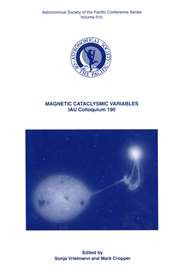No CrossRef data available.
Article contents
The Problem of the UV Interstellar Absorption Band at 2200A
Published online by Cambridge University Press: 25 September 2017
Extract
The ultraviolet interstellar extinction curve from 2740Å to 1350Å has been obtained using data from the S2/68 satellite experiment. The extinction increases into the ultraviolet and shows a pronounced peak at 2200Å. This is interpreted as a general scattering continuum with a strong absorption feature superposed on it at 2200Å. The profile of the feature appears to be symmetrical and has a half-width of 360Å. There is a strong correlation between the strength of the feature and the scattering part of the curve in both the ultraviolet and the visible. On a broad scale the shape of the extinction curve is constant showing no variation with distance from the sun, direction around the galaxy, and height above the galactic plane.
Information
- Type
- Research Article
- Information
- Copyright
- Copyright © Crown Research Institutes 1977

